Mark Anthony Neal's Blog, page 510
June 18, 2017
ProPublica's The Breakthrough: Uncovering NYC Cops Making Millions in Suspicious Deals
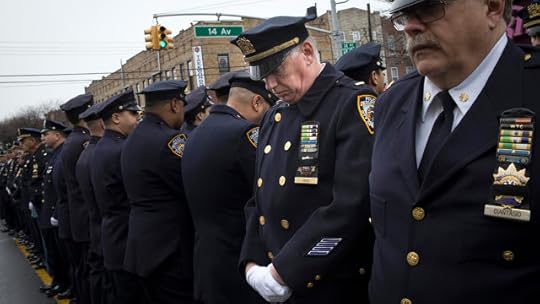 'On first episode of this season’s The Breakthrough, ProPublica talks with WNYC’s Robert Lewis tells us how his reporting triggered an internal investigation of suspicious dealings made by active-duty New York police officer.' -- ProPublica
'On first episode of this season’s The Breakthrough, ProPublica talks with WNYC’s Robert Lewis tells us how his reporting triggered an internal investigation of suspicious dealings made by active-duty New York police officer.' -- ProPublica
Published on June 18, 2017 19:44
Vocalo: Ice Cube Celebrates 25th anniversary of Death Certificate and Launch of BIG3 Basketball League
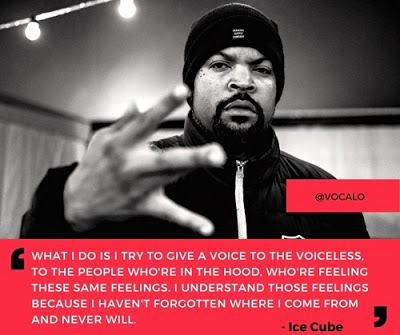 'Seminal West Coast rap icon Ice Cube is dipping his toes into the realm of professional basketball with the launch of his new 3 on 3 league, The BIG3. Jill Hopkins spoke with Cube about his new endeavor as well as the 25th anniversary of his classic Death Certificate reissue.' -- Vocalo Music
'Seminal West Coast rap icon Ice Cube is dipping his toes into the realm of professional basketball with the launch of his new 3 on 3 league, The BIG3. Jill Hopkins spoke with Cube about his new endeavor as well as the 25th anniversary of his classic Death Certificate reissue.' -- Vocalo Music
Published on June 18, 2017 19:37
Flatbush + Main: W.E.B. Du Bois in Brooklyn
 'In Episode 11 of Brooklyn Historical Society’s podcast
Flatbush + Main
, co-hosts Zaheer Ali and Julie Golia explore the last decade of the life of iconic Civil Rights leader W.E.B. Du Bois, when he called Brooklyn home.'
'In Episode 11 of Brooklyn Historical Society’s podcast
Flatbush + Main
, co-hosts Zaheer Ali and Julie Golia explore the last decade of the life of iconic Civil Rights leader W.E.B. Du Bois, when he called Brooklyn home.'
Published on June 18, 2017 19:30
June 17, 2017
Compliance Won’t Save You: on Philando Castile
 Compliance Won’t Save Youby Mark Anthony Neal | @NewBlackMan | NewBlackMan (in Exile)
Compliance Won’t Save Youby Mark Anthony Neal | @NewBlackMan | NewBlackMan (in Exile)In early December of 2016, the city of Chicago prepared to settle suits for two deadly police shootings for more than $6 Million. Days later the cities of Los Angeles and New Orleans settled similar cases regarding deadly police shootings for $8 Million and $13 Million, respectively. The new year was not yet a month old when New York City agreed to pay two shooting victims (who both survived) more than $8 Million after they were attacked by a drunk, off-duty police officer. Months later New York City also settled a wrongful conviction suit for more than $25 Million, for two Black men who collectively served thirty-eight years for a murder they did not commit. As Jim Dwyer wrote in the the New York Times, “Since the beginning of 2014, the city has paid at least $199,508,000 — call it $200 million — to people wrongly convicted of crimes...In virtually every settlement, the city disclaims wrongdoing.”
The above data serves to place in some perspective the recent acquittal of Jeronimo Yanez, a Minnesota police officer who was charged with second-degree manslaughter in the shooting death of 32-Year-old Philando Castile. As has been the trend with similar acquittals in, oh so many, shooting deaths by police officers, a conviction would mean an admission of guilt and wrongdoing. There no need for another round of exasperated hyperbole to explain the failure to convict another police officer; The State must defend the right of its paramilitary to work without fear of punishment or reprisal, and a general public that has been led to believe that the lack of such fear is in their best interests -- will keep them safe against the so called other, who most often is us -- are complicit.
Sticks and stones may break your bones but names can never harm you — unless you are a law enforcement officer accused of a wrongful shooting, and you might be called “convicted.” Municipalities have learned; write a big-ass check (often at the expense of the very communities under assault, who lose access to vital services in order to to pay for failed policing) and keep it moving.
Besides the sheer viciousness and accompanying ineptitude on display in the shooting death of Mr. Castile, what made the case so compelling was Diamond Reynolds’s live-streaming of the immediate aftermath of the shooting, including her own disturbing interactions with former officer Yanez. Ms. Reynolds’s four-year-old daughter witnessed the events from the backseat of the car, and can be heard comforting her mother in the video.
What remains so striking about the shooting of Mr,. Castile is that in his interactions with former officer Yanez, he was compliant. In a moment when Black bodies are subjected to all manner of violence for non-compliance -- most viscerally in schooling environments, where non-compliance might simply entail asking a question -- Mr. Castile chose compliance.
A high school graduate who had been employed as nutrition specialist and supervisor in the Saint Paul Public School district for nearly 15-years at the time of his death, we have no idea whether Mr. Castile’s pants sagged, whether former officer Yanez could discern if Mr. Castille had provocative tattoos or a gold tooth, only that he suspected Mr. Castile as a suspect in a robbery, in part, because of his “wide-set nose.”; hundreds of thousands of Black men would have been stopped and likely killed based on that criteria, as Mr. Castile himself -- a municipal employee just like former officer Yanez -- had been stopped 52 times for suspected minor traffic infractions.
Historically young Blacks have been implored to be compliant in their interactions with law enforcement; then as now, compliance has not been useful armor against the brutalization of Black bodies. Compliance, like civility, has often been a ruse within systems of White Supremacy, used as a controlling mechanism that has little interest in our well-being. There are many who believe that literally beating Black youth over the head with demands for compliance -- what we witness in the surveillance and policing of Black youthfulness in formal schooling environments -- will actually save Black youth. As someone who spent much of his adult life in such school environments, Mr. Castile might have held such beliefs himself. Compliance didn’t save Mr. Castile; it won’t save us.
Published on June 17, 2017 03:37
June 13, 2017
Loving Hard Like a Bill Withers Song: Five Albums
 Loving Hard Like a Bill Withers Song: Five Albumsby Mark Anthony Neal | @NewBlackMan | NewBlackMan (in Exile)
Loving Hard Like a Bill Withers Song: Five Albumsby Mark Anthony Neal | @NewBlackMan | NewBlackMan (in Exile)The thing that is important to remember about Bill Withers, is that when he officially “arrived” in the spring of 1971 with his debut album Just As I Am, he was a fully-formed 32-year-old. To place in perspective, among the most popular male Soul vocalists of the era, Stevie Wonder had just turned 21; Curtis Mayfield, whose first recordings with The Impressions were released in 1958, was yet to turn 30; Donny Hathaway, then two albums into his career was 25; Ronald Isley, almost 15 years into his career, had just turned 30; Isaac Hayes was still a year away from his Academy Award and his 30th birthday; and Michael Jackson -- who would cover Withers’s “Ain’t No Sunshine” later that year, and arguably the most popular of the bunch -- was...12.
That is to say, Mr. Withers was both brand-new and a veteran -- to life -- when folk first heard “Harlem,” the song that opens Just As I Am. In a world in which Michael Jackson first became a superstar singing “silly love songs”-- to echo Paul McCartney -- a Bill Withers song was the reflection of a grown-ass man -- a grown ass-Black Man from West Virginia, who had lived and loved hard; and lost twice as hard; ain't nary a combination of “silly” and “love” in his vocabulary.
Just As I Am (1971)
Bill Withers closes side-A of his debut Just As I Am, a jazzy little groover, with the closest thing to a straightforward autobiography, as Withers name checks his producer, the legendary Booker T. Jones of Booker T. & the MG's fame. What Mr. Jones -- as Withers refers to him -- implored him to do was to simply “do it good,” which should taken as the kind of encouragement that you could give an artist in the wide open spaces of the early 1970s.
Mr. Withers’s career, might be correctly read as an index of that openness and its closure; there was likely some marketing exec in the studio, who said, like Bobby Womack recalled on a recording from the same period, “but you're not commercial.” In Mr. Withers’s corner, besides Mr. Jones, was a visionary by the name of Clarence Avant, whose fledgling independent label Sussex would be home to Mr. Withers until it folded in 1974. And as for it being commercial, one might ask commercial to who? A phenomenal songwriter, whose genius was the unpretentious adornment of the music and his emotions, there clearly was an audience for a grown-ass, working-class -- he’s wearing a t-shirt and jeans on the album cover, as if he just literally just finished installing an airplane toilet as was his vocation before Just As I Am -- brown-liquor-drinking-after-church Black men.
Save a cover of Lennon & McCartney’s “Let It Be,” nine of the eleven tracks were written and composed by Withers, in what sounds like a lifetime of keeping words and music in his head -- in between coffee breaks. What made Bill Withers a star was the plaintive and damn-near mournful “Ain’t No Sunshine” -- babygurl done gone (and going), and per his own admission he “oughtta leave the young thang alone” -- with the remarkable run of “I know’s” that precede his admission, a literal reflection of how exhausted he is trying to keep up. And ain’t nothing more universal than the aging grown man enticed by a glimpse of legal youngness just beyond their grasp; you hear powerful echoes of “Ain’t No Sunshine” more than a generation later when Anthony Hamilton -- perhaps Withers’s purest heir -- sings “Coming From Where I’m From.”
If “Ain’t No Sunshine” found a pop audience -- it peaked at #3 on the pop charts and earned Withers his first Grammy Award -- it was “Grandma’s Hands” that would earn the singer-songwriter favor among Black audiences. The song was a tribute to Black women and Black othermothers, staking a claim on the vitality of community at a moment when Black communities -- from West Virginia to Chicago to Los Angeles -- were being transformed.
And this is not to suggest that Withers’s images of community are overly romanticized; Grandma resonates in this case, because there’s a parent or two, not in the mix -- for whatever reasons -- a point made by Withers on the remarkable “I’m Her Daddy.” To be sure there were likely few songs in the pop music pantheon that so matter-of-factly discussed out-of-wedlock birth, and in this case it is Withers narrating a confrontation with his daughter’s mother six-years after her birth, with the the simple query, “does she know, I’m her daddy?”. But Mr. Withers is also about balance, so Just As I Am closes with “Better Off Dead,” a song about a man dealing with his demons, who admits that his wife and kids were better off without him. Withers sings, “Now I must die by my own hand, ‘cause I’m not man enough to live alone” -- a lesson in the dangers of unchecked depression -- as the song and album ends with a single gunshot. Direct. Specific. Unadorned. Bill Withers.
Still Bill (1972)
By the time Still Bill was released in May of 1972, Bill Withers was well on his way to becoming a global pop star, on the strength of the album’s lead single “Lean on Me,” which became his first song to top the pop charts. The song is among the handful of songs from the 1970s -- James Taylor’s “Fire and Rain”; Carole King’s “You’ve Got a Friend”; Leon Russell’s “A Song for You” -- that can be recognized as pop standards. As the title of the album might suggest, his meteoric rise notwithstanding, Withers was the still the same ole Bill Withers. While there might be truth to that, the title also highlights that the rawness of his debut, had given way to a more polished even urbane sound. Even still it is still Bill Withers.
Still Bill is, in a word, iconic.
The opening side of Still Bill is as classic a suite of recordings that can be heard on any Pop-Soul recording from that era; it literally produced two top-of-pop chart-type songs and at least two others that would be referenced in any Soul-music starter kit. Whereas the album opener “Lonely Town, Lonely Street” provides a quick rearview to Just As I Am -- from the vantage of the new Cadillac, as opposed from the rusty Ford -- “Let Me in Your Life” finds Withers in peak form as balladeer, an aspect of his career that has been given short shrift, in part because there was so little available space in the culture for Black men to be tender. In a powerful show of professional respect, Aretha Franklin would not only cover “Let Me In Your Life,” but used it for the title track, for what was arguably her strongest studio album in the 1970s.
The fleeting of moments of vulnerability heard from Withers on “Let Me In Your Life” immediately gives way to the full power of Mr. Withers’s rage on the track “Who Is He (and What is He to You)” (co-written with Stanley McKenny). Backed by sinister bass-line -- covered over a thrilling 11-minutes by Creative Source the next year, and a generation later by bassist Meshell Ndegeocello -- “Who Is He” provides insight to a grown man’s suspicion (“a man we just passed, just tried to stare me down”), jealousy (“when you cleared your throat was that your cue?”), resignation (“you're too much for one man, but not enough for two”), and finally rage (“dadgummit”). Withers’s signature groove is still apparent on the next track, “Use Me,” which peaked at #2 on the Pop charts. Built around an infectious drum break, courtesy of veteran session drummer James Gadson, Withers still has woman problems -- in his mind she’s still untrustworthy, though he puts the blame on himself for staying put. The A-side closes with the ubiquitous “Lean on Me”; which would become a #1 pop hit 15 years later courtesy of Club Nouveau’s Grammy Award winning beat-machined version of the song.
By the Fall of 1972, Withers would headline at Carnegie Hall; one of the sessions was released as a live album, largely of material from his first two albums, though his live rendition of “Grandma’s Hand,” which featured an extended spoken introduction, is likely more popular now than the studio version. The same might be said of Withers’s exquisite live reading of “Let Me In Your Life.” The highlight of the live album, was song that Withers had not released as a studio recording, the thoughtful anti-Vietnam War ballad “I Can’t Write Left-Handed” which told the story of a vietnam veteran who lost his right arm. Commercially, 1972 marked the peak of Withers’s career.
+'Justments (1974)
+'Justments was Withers’s last album with Sussex, which went bankrupt in 1975. Withers himself, was never comfortable with the limelight that accompanied his success, including his brief marriage to everybody’s Room 222/Let’s Do It Again bae Denise Nicholas (their marital problems have long informed interpretations of Withers’s lyrics). Fully in control, +'Justments seems the album that Withers most wanted to record. Though "The Same Love That Made Me Laugh" was released as lead single -- in the same pocket that produced “Use Me” -- there were no obvious singles on the album. The highlight of the album are the sparse ballads like the majestic “Stories,” “Liza” (a trinket for his young niece), “Make a Smile for Me,” and the jazzy “Can We Pretend,” co-written by Nicholas with what feels like couple trying to find common ground moving forward. Withers, who grew up in a coal town in West Virginia, closes +'Justments with the autobiographical “Railroad Man” (joined by Jose Feliciano). In the song, Withers reflects on the ways the the railroad fueled his imagination for travel, as well as informed his sense of rhythm as a songwriter. Like Just As I Am, there’s sense of finality to the song; we hear of a railroad man who “stepped in front of the railroad train.”
Making Music (1975)
To be sure, Bill Withers’s signing with Columbia, after the collapse of Sussex, was a lucrative one for the singer/songwriter; it was a relationship, nevertheless, fraught with frustration. A quick glance of the number of collaborators sheds some light on the new world the Withers had to navigate at Columbia, where there were higher expectations, yet -- ironically -- less attention paid to an artists who mattered little to the brand, but were critical to the bottom line. Making Music generated no hit singles. “I Wish You Well,” Withers’s send off to Denise Nicholas failed to reach the Billboard 100, and “Make Love to Your Mind” -- a song so busy, that Withers’s voice is almost lost, literally in the mix, barely cracked the top-10 R&B chart; Withers’s days as a chart-topping artist were largely over.
Yet there are simple gems, “I Love You Dawn” is two and a half minutes of uncut beauty; a cold ending that will leave you breathless. On “Paint a Pretty Picture,” finds Withers introspective over a strings and an electric piano, that highlight his core talent to actually paint pictures with his lyrics. The album ends with the wistful “Hello Like Before”; a chance encounter with a former lover, that masks obvious regrets, while considering new possibilities that can never be realized. The song would be covered the following year by labelmate Jon Lucien, whose own brilliant, and admittedly overproduced rendition takes nothing from modesty of Withers’s original. While Making Music, might have been a commercial failure, and indeed there were more to come, the aforementioned album cuts offer some of the best examples of the purity of Withers’s genius.
Menagerie (1977)
Following Naked and Warm (1976) -- easily the nadir of Withers’s recording career, save the ambitious “City of the Angels” and the drowsy, late-night lullaby “My Imagination” -- Withers returned with Menagerie. Released as Disco was becoming a force -- the film Saturday Night Fever was released in the Fall of 1977 -- Withers was paired with hitmaker Skip Scarborough, who was responsible for Earth, Wind & Fire’s “Can’t Hide Love” (originally recorded by Creative Source), LTD’s breakout “Love Ballad” (later a hit for George Benson), and “Don’t Ask My Neighbor,” from the Emotions. Scarbrough’s gift to Withers was “Lovely Day” -- now a cornerstone of the Bill Withers’s songbook, and his bridge to the Hip-Hop Generation(s), thanks to films like Roll Bounce (2005). “Lovely Day” would be Withers’s last pop hit recorded in his name, and for all intents his last R&B hit. Yet the album remains a Withers classic because of tracks like “Then You Smile at Me,” “I Want to Spend the Night,” “Let Me Be the One You Need” (one of his strongest ballads) and the lovely “Tender Things.” Almost thirty-years later, Kanye West would cull the unreleased track “Rosie” from the Menagerie sessions, for his tribute to his grandmother on “Roses.”
After the release of ‘Bout Love in 1978, Withers would not release another studio recording until 1985’s Watching You, Watching Me, largely because of the struggles he faced with his label. In response, Withers simply sat out, though he did contribute vocals to The Crusaders (“Soul Shadows”) and drummer Ralph MacDonald’s cover of Grover Washington, Jr.’s “In the Name of Love,” which earned a Grammy nomination in 1984. It was on the same album that the original “In the Name of Love” appeared, Washington’s Winelight (1980), that Withers recorded what might be his most timeless vocals. “Just the Two of Us” was a top-3 hit on both the Pop and R&B charts, earned the duo Grammy nominations for Best Song and Best Record, and a Grammy win for best R&B song. More than a decade later Will Smith would record a cover as a song for his young son.
Provided some gravitas following the success of “Just the Two of Us” (on another label, no less), Columbia released Watching You, Watching Me in 1985 (famously including many of the songs they rejected years earlier), fulfilling Withers’s contractual obligation to the label; it remains his last studio recording.
In the aftermath of the stellar documentary about Withers, Still Bill, Columbia released The Complete Sussex and Columbia Albums, which serves as an ideal retrospective, and hopefully for others, a brilliant introduction to one of the defining voices of a generation.
Published on June 13, 2017 17:21
June 12, 2017
Christopher Emdin: For White Folks Who Teach in the Hood
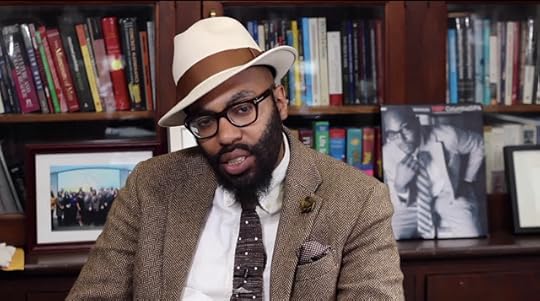 'Dr. Christopher Emdin is an Associate Professor in the Department of Mathematics, Science and Technology at Teachers College, Columbia University; where he also serves as Director of Science Education at the Center for Health Equity and Urban Science Education. He is also the Associate Director of the Institute for Urban and Minority Education at Teachers College, Columbia University. He is an alumni fellow at the Hutchins Center at Harvard University. He is the author of the award winning book, Urban Science Education for the Hip-hop Generation and For White Folks Who Teach In the Hood and the Rest of Ya’ll too, which is currently on the New York Times best sellers list..' -- The Brainwaves Video Anthology
'Dr. Christopher Emdin is an Associate Professor in the Department of Mathematics, Science and Technology at Teachers College, Columbia University; where he also serves as Director of Science Education at the Center for Health Equity and Urban Science Education. He is also the Associate Director of the Institute for Urban and Minority Education at Teachers College, Columbia University. He is an alumni fellow at the Hutchins Center at Harvard University. He is the author of the award winning book, Urban Science Education for the Hip-hop Generation and For White Folks Who Teach In the Hood and the Rest of Ya’ll too, which is currently on the New York Times best sellers list..' -- The Brainwaves Video Anthology
Published on June 12, 2017 17:59
Ava DuVernay Shares The Mission & Challenge of 'Queen Sugar'
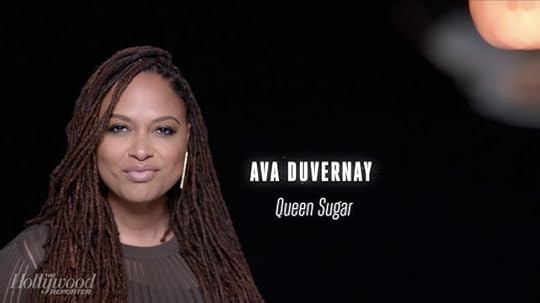 'Ava DuVernay (Queen Sugar) joins The Hollywood Reporter for this season's Drama Showrunner Roundtable. In this episode of Close Up she shares she challenge (and mission) of creating a show where "black people had concerns other than being black."' -- The Hollywood Reporter
'Ava DuVernay (Queen Sugar) joins The Hollywood Reporter for this season's Drama Showrunner Roundtable. In this episode of Close Up she shares she challenge (and mission) of creating a show where "black people had concerns other than being black."' -- The Hollywood Reporter
Published on June 12, 2017 17:50
Poverty and Bohemia in Bed-Stuy
 '
Brandon Harris
, contributing editor to Filmmaker Magazine, filmmaker and film writer and the author of
Making Rent in Bed-Stuy: A Memoir of Trying to Make It in New York City
(Amistad, 2017), talks about the history of Brooklyn's largest historically black neighborhood, and trying to make it as an artist in the changing neighborhood.' --
The Brian Lehrer Show
'
Brandon Harris
, contributing editor to Filmmaker Magazine, filmmaker and film writer and the author of
Making Rent in Bed-Stuy: A Memoir of Trying to Make It in New York City
(Amistad, 2017), talks about the history of Brooklyn's largest historically black neighborhood, and trying to make it as an artist in the changing neighborhood.' --
The Brian Lehrer Show
Published on June 12, 2017 17:19
Rita Dove Dances till Dawn
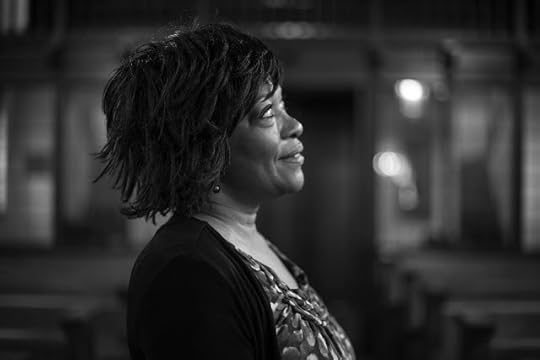 'When the poet Rita Dove’s house in Charlottesville, Virginia, burned to the ground, she and her husband had to start over. Her first clothing purchase was a gown to wear to a dinner dance. And, when they rebuilt the house, the couple designed a giant space just to practice ballroom dance in—waltz, foxtrot, Argentine tango, and other steps. Dove talks about how dancing gave her a new lease on life, and reads her poem “Foxtrot Fridays,” the first she wrote after the fire.' -- The New Yorker Radio Hour
'When the poet Rita Dove’s house in Charlottesville, Virginia, burned to the ground, she and her husband had to start over. Her first clothing purchase was a gown to wear to a dinner dance. And, when they rebuilt the house, the couple designed a giant space just to practice ballroom dance in—waltz, foxtrot, Argentine tango, and other steps. Dove talks about how dancing gave her a new lease on life, and reads her poem “Foxtrot Fridays,” the first she wrote after the fire.' -- The New Yorker Radio Hour
Published on June 12, 2017 17:10
Jelani Cobb: "The Half-Life of Freedom: The Media and Alternative Facts"
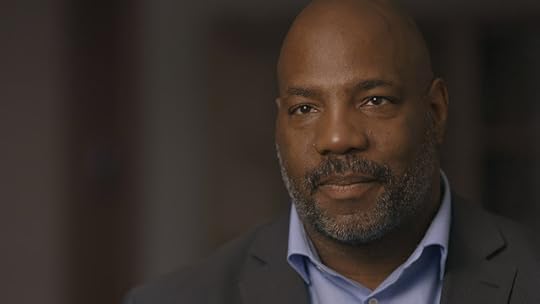 'New Yorker staff writer and Columbia Journalism School professor Jelani Cobb delivers a lecture on politics, journalism, and history entitled "The Half-Life of Freedom." Part 1: "The Media and Alternative Facts".' -- New York Public Library
'New Yorker staff writer and Columbia Journalism School professor Jelani Cobb delivers a lecture on politics, journalism, and history entitled "The Half-Life of Freedom." Part 1: "The Media and Alternative Facts".' -- New York Public Library
Published on June 12, 2017 16:58
Mark Anthony Neal's Blog
- Mark Anthony Neal's profile
- 30 followers
Mark Anthony Neal isn't a Goodreads Author
(yet),
but they
do have a blog,
so here are some recent posts imported from
their feed.



